Central African Republic Flag Meaning
Four horizontal stripes of blue, white, green, and yellow with a vertical red stripe through the center and a yellow five-pointed star in the upper hoist, combining Pan-African and French colors to represent unity and independence.
- Continent
- Africa
- Adopted
- 1958
- Ratio
- 2:3
- Colors
- blue, white, green, yellow, red
- Designer
- Barthélemy Boganda
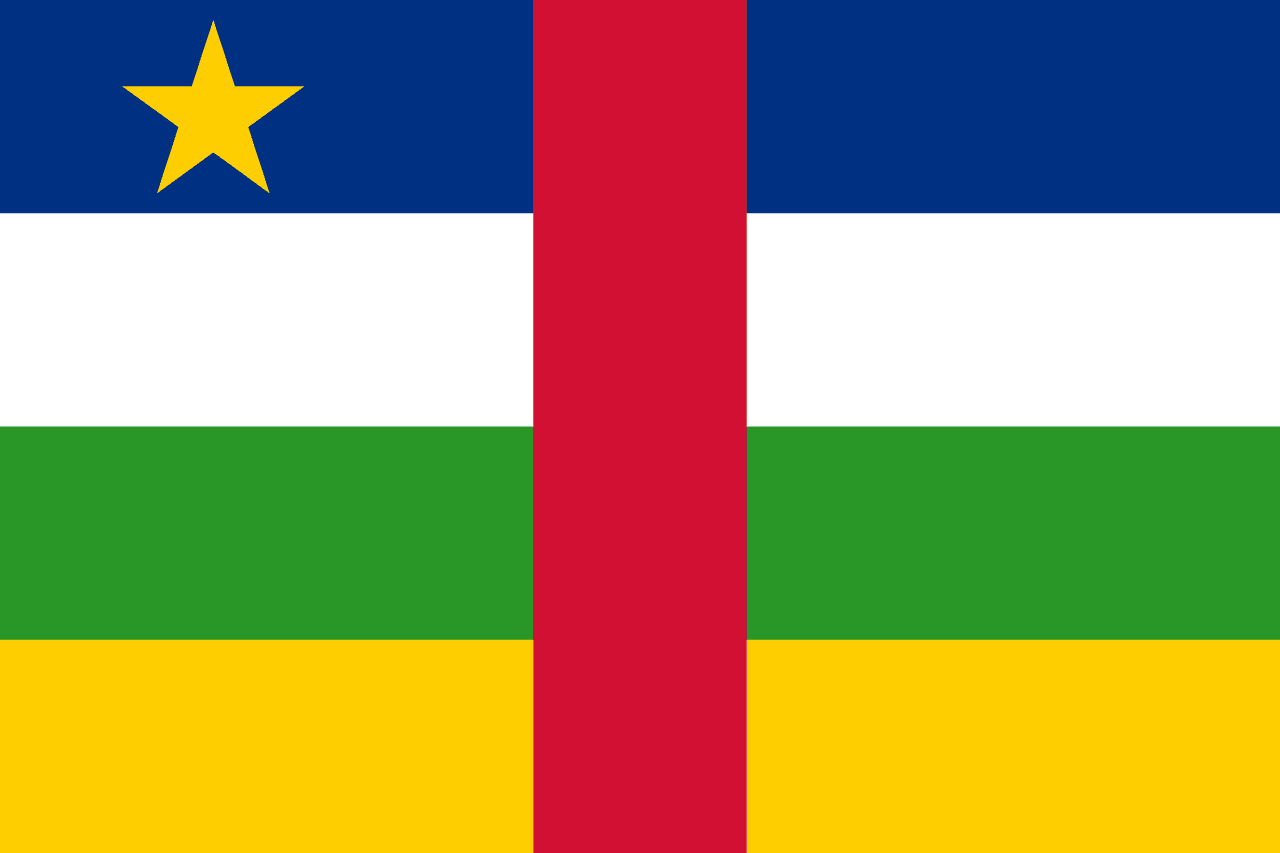
Symbolism
Blue Stripe: Represents freedom, peace, and the sky above the Central African Republic, symbolizing the aspirations of the people for liberty and the vast open skies over the landlocked nation in the heart of Africa.
White Stripe: Represents peace and dignity, symbolizing the desire for harmony among the diverse ethnic groups of the Central African Republic and the hope for national unity and reconciliation.
Green Stripe: Represents hope and faith, symbolizing the lush forests and natural vegetation that cover much of the country and the optimism for future prosperity and development.
Yellow Stripe: Represents tolerance and hospitality, symbolizing the traditional African values of welcome and generosity, as well as the country's mineral wealth including gold and diamonds.
Red Vertical Stripe: Represents the blood shed for independence and the unity that binds together all Central Africans, symbolizing the sacrifice made for freedom and the common destiny of all ethnic groups.
Yellow Five-Pointed Star: Represents the guiding star of destiny and the bright future ahead for the Central African Republic, symbolizing hope and the aspiration to achieve progress and prosperity.
History
- Pre-1880s: The region was inhabited by various ethnic groups including the Banda, Baya, and others, with decentralized societies engaged in agriculture, hunting, and trade across Central Africa.
- 1880s-1960: French colonization established Ubangi-Shari as part of French Equatorial Africa, with brutal exploitation including forced labor for construction projects and extraction of natural resources.
- 1946-1958: Barthélemy Boganda emerged as the leading independence advocate, founding the Movement for the Social Evolution of Black Africa (MESAN) and designing the flag to represent African unity.
- December 1, 1958: The territory became the autonomous Central African Republic within the French Community, adopting the current flag design created by Boganda to symbolize the new nation.
- August 13, 1960: The Central African Republic gained full independence from France under President David Dacko, maintaining the flag while establishing sovereignty and national institutions.
- 1965-1979: Jean-Bédel Bokassa seized power in a coup and later declared himself Emperor, renaming the country Central African Empire while maintaining the same flag design.
- 1979-2013: Political instability continued with multiple coups and changes of government, while the flag remained constant through periods of economic decline and social upheaval.
- 2013-Present: Sectarian conflict between Muslim Séléka rebels and Christian anti-balaka militias led to international intervention, with ongoing efforts to restore peace and rebuild state institutions under the same flag.
Trivia
- The Central African Republic is one of the world's poorest countries despite having significant natural resources including diamonds, gold, uranium, and oil.
- The flag represents a completely landlocked country in the heart of Africa, bordered by six nations but with no access to the sea.
- Barthélemy Boganda, who designed the flag, died in a plane crash in 1959, just before independence, becoming a martyr for the independence movement.
- The country has experienced significant political instability, with numerous coups and only brief periods of democratic governance since independence.
- Central African Republic is home to the Dzanga-Sangha Protected Areas, which contain some of Africa's last remaining populations of forest elephants.
- The flag flies over a country where over 70 languages are spoken, reflecting the incredible ethnic and linguistic diversity of Central Africa.
- French is the official language, but Sango is widely used as a lingua franca among the diverse ethnic groups throughout the country.
- The country has significant diamond deposits, but much of the mining is done illegally or in conflict zones, contributing to ongoing instability.
- Central African Republic has one of the world's lowest Human Development Index rankings, with limited infrastructure and basic services.
- The flag represents a country that has hosted significant populations of refugees from neighboring conflicts while also producing refugees itself.
- Traditional Central African music includes unique instruments and styles, with the Aka people known for their sophisticated polyphonic singing techniques.
- The country sits on the continental divide between the Congo and Nile river basins, making it a crucial watershed region for Central and Eastern Africa.
- Central African Republic has significant wildlife including forest elephants, western lowland gorillas, and various antelope species in its national parks.
- The economy depends heavily on subsistence agriculture and livestock, with limited industrial development due to poor infrastructure and political instability.
- International peacekeeping forces have been deployed multiple times to help restore stability, reflecting the ongoing challenges facing this strategically located but troubled nation.
Related Countries
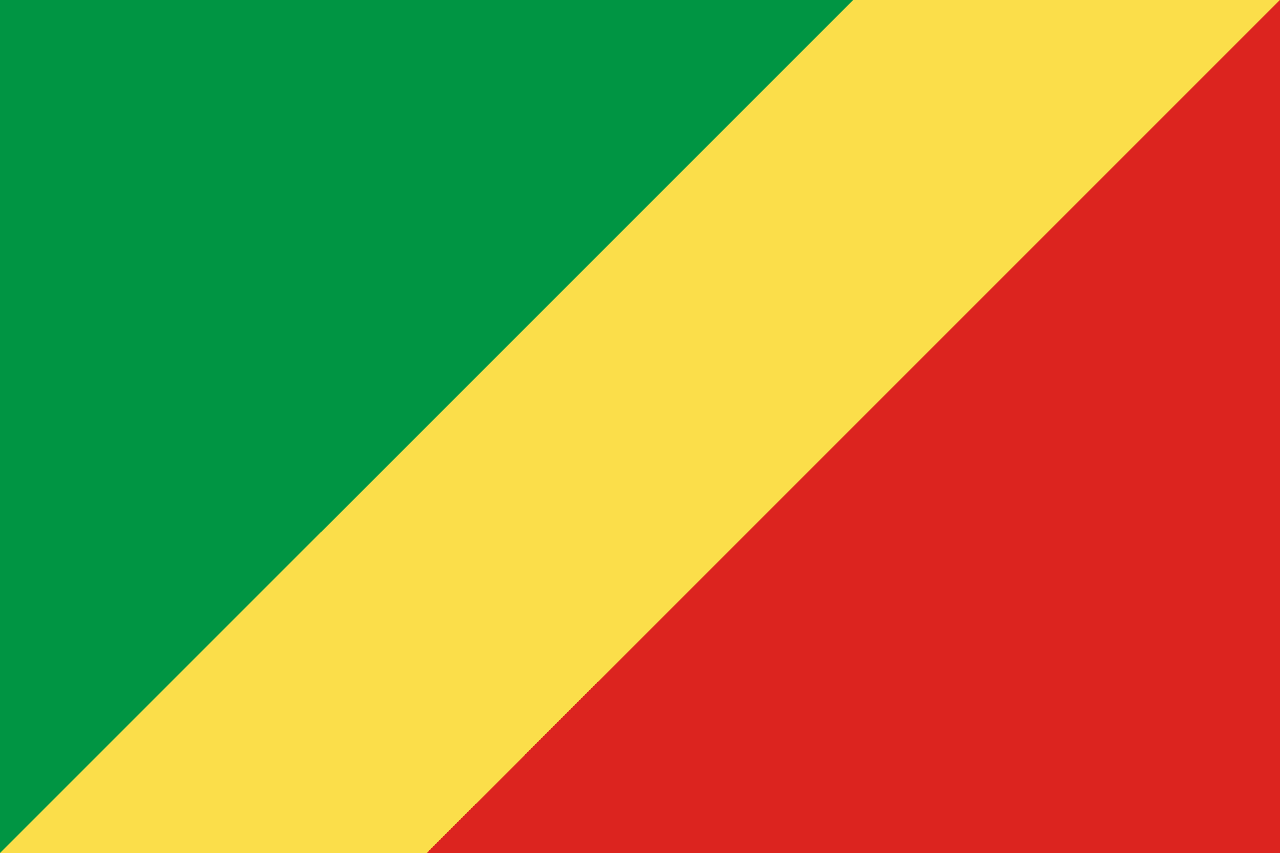
Republic of the Congo
Africa
A diagonal tricolor with green in the upper hoist, red in the lower fly, and yellow diagonal stripe separating them, representing the forests, the struggle for independence, and the friendship and nobility of the Congolese people.
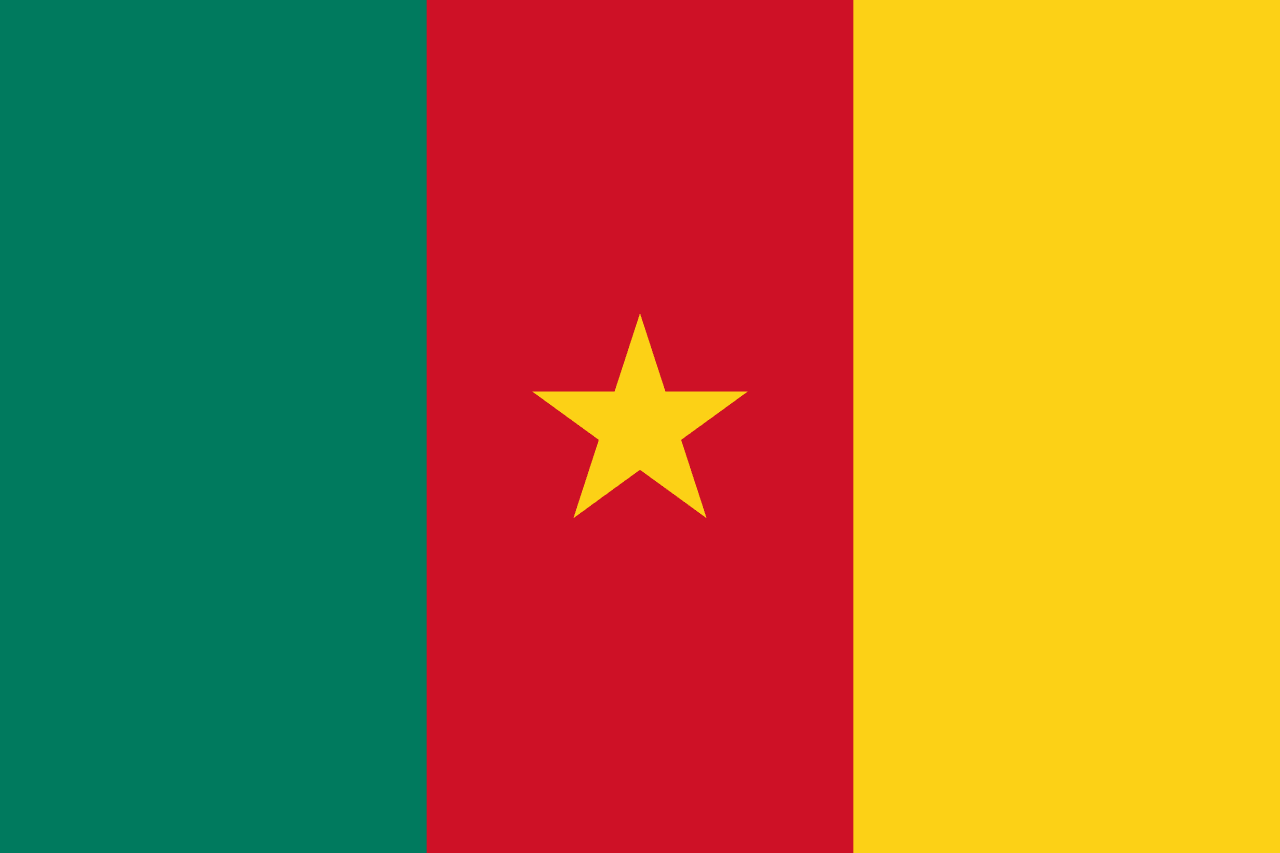
Cameroon
Africa
Three vertical stripes of green, red, and yellow with a yellow five-pointed star in the center of the red stripe, representing the forests, unity, the sun and savanna, and the unity of the diverse peoples of Cameroon.
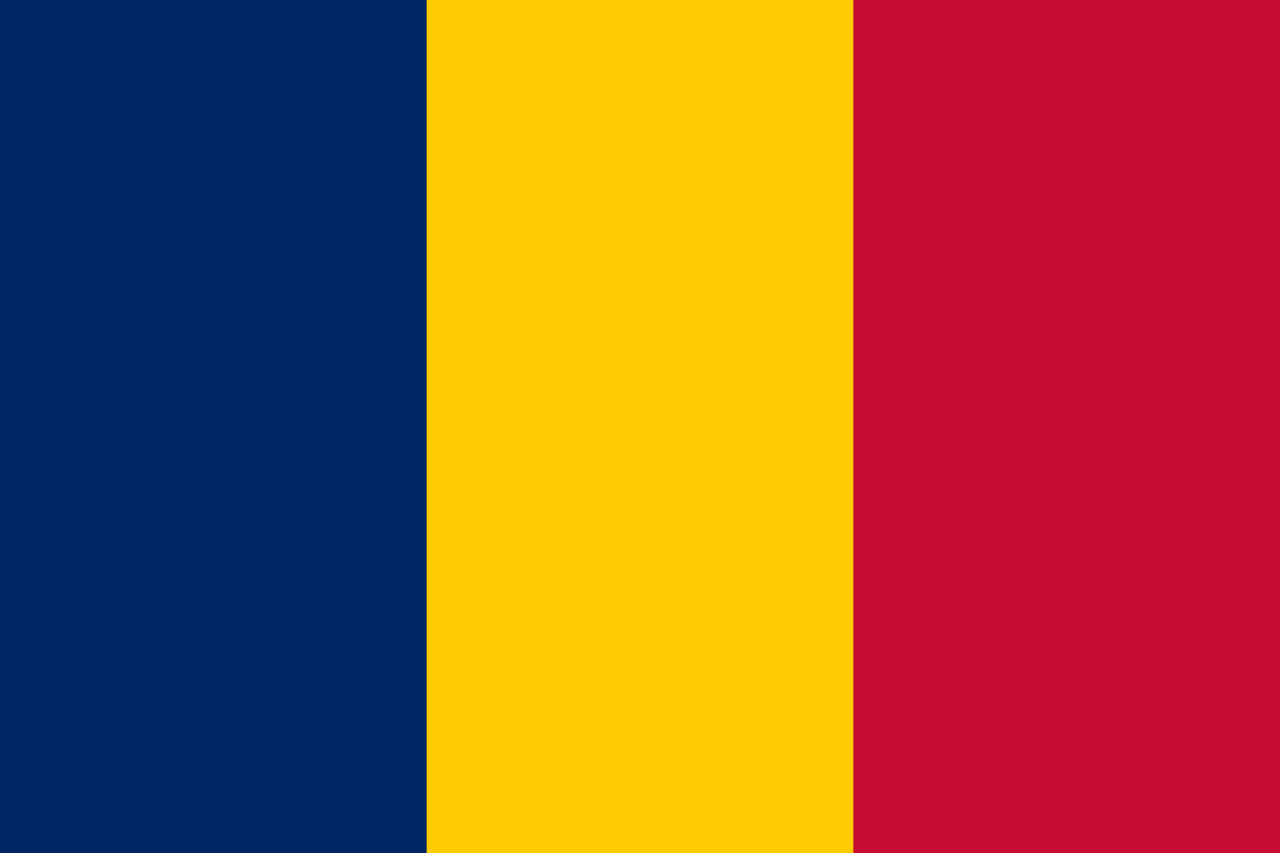
Chad
Africa
Three vertical stripes of blue, yellow, and red representing Chad's geographic diversity from the waters and sky in the north to the desert and savannas, adopted on the eve of independence from France.
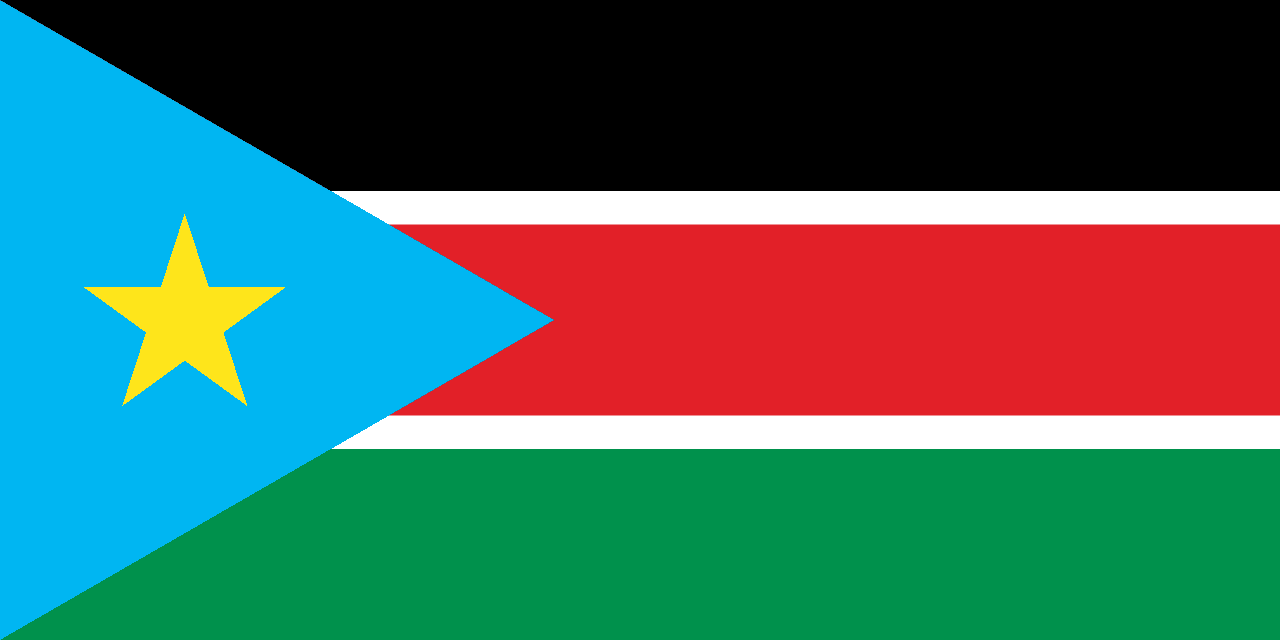
South Sudan
Africa
Three horizontal stripes of black, red, and white with a blue triangle at the hoist containing a yellow star, representing the African people, the blood shed for freedom, peace, the Nile River, and the unity of the states, designed for the world's newest country upon independence in 2011.
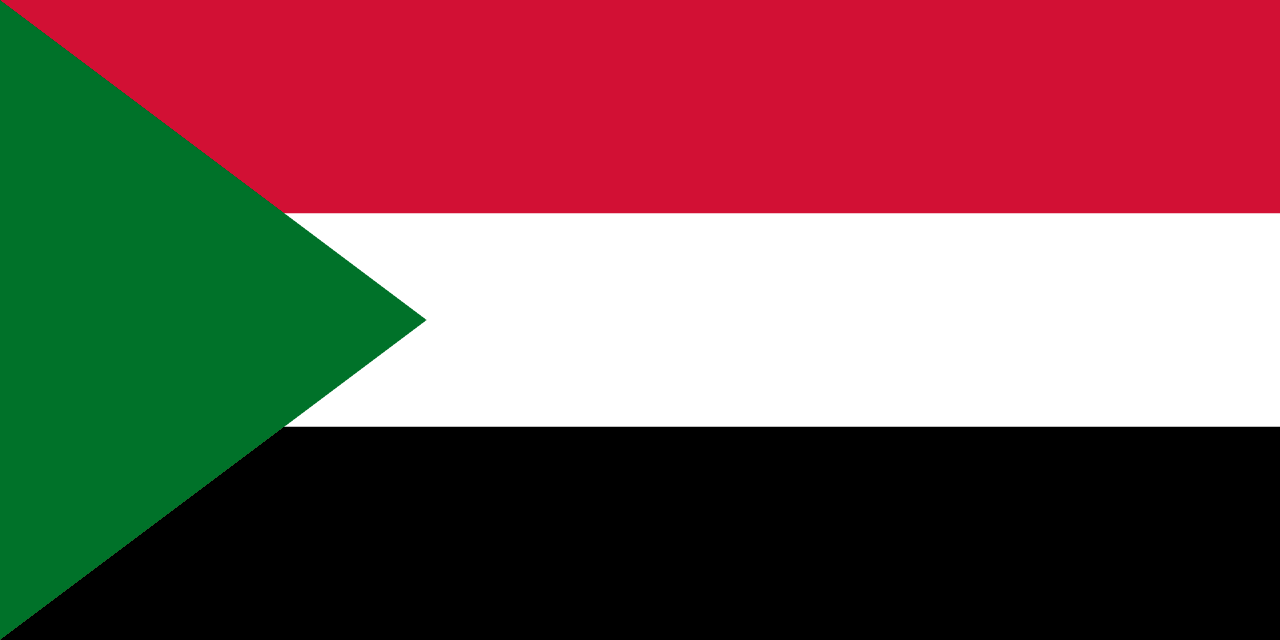
Sudan
Africa
Three horizontal stripes of red, white, and black with a green triangle at the hoist, representing the Pan-Arab colors of the struggle for independence, the blood shed for freedom, peace and light, the battles against oppression, and the prosperity and agriculture of Sudan.
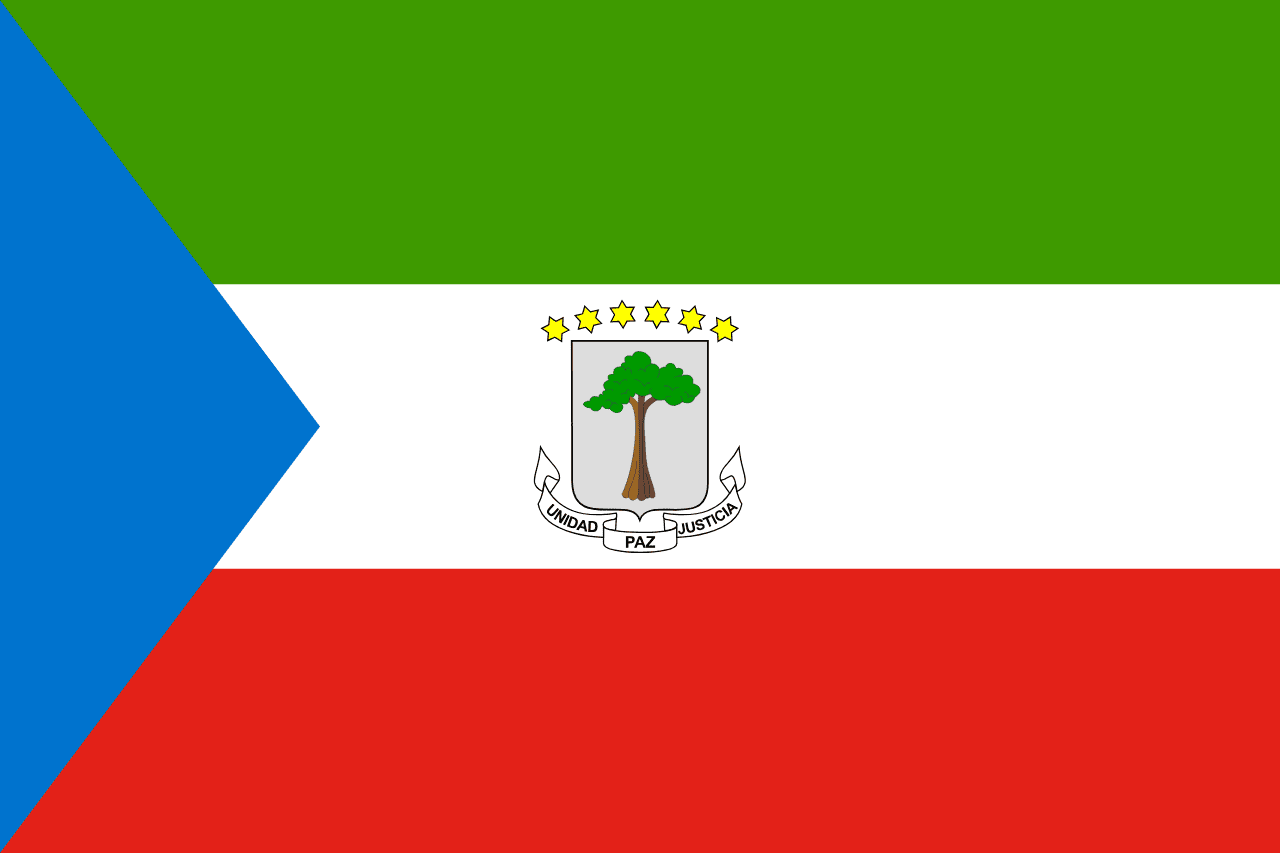
Equatorial Guinea
Africa
Three horizontal stripes of green, white, and red with a blue triangle at the hoist and the national coat of arms in the center, representing the country's forests, peace, independence struggle, and maritime heritage.